education in yeovil
national DAY school
Huish
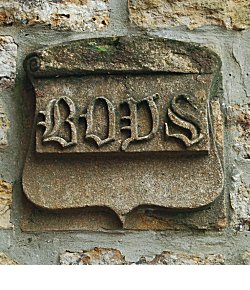 A
campaign was
begun in 1839
for a Church of
England day
school for boys
and in 1843 the
Vicarage Street
Sunday School
building was
being used to
teach seventy
boys.
Unfortunately
the schoolmaster
threatened to
resign because
of the unhealthy
conditions which
eventually
resulted in the
building of the
first National
School in
Huish.
A
campaign was
begun in 1839
for a Church of
England day
school for boys
and in 1843 the
Vicarage Street
Sunday School
building was
being used to
teach seventy
boys.
Unfortunately
the schoolmaster
threatened to
resign because
of the unhealthy
conditions which
eventually
resulted in the
building of the
first National
School in
Huish.
Glove manufacturer Robert Tucker, by now retired and a Town Commissioner, acted as secretary for the campaign and donated to the ministers and churchwardens of the parishes of Yeovil and Preston a garden plot adjacent to the Calvinist burial ground as a site for the school. In April 1846 the National Day School opened for the education of children of poor parents "in the principles of the Church of England". However Robert Tucker firmly opposed exclusively denominational teaching at the school, insisting on "daily study of the Bible but no catechism and no requirement to attend a particular Sunday School". He ensured that history and geography were included in the curriculum, and persuaded the committee to reject a suggestion that the time accorded to singing was too much.
The school was built in Huish, on the garden plot next to the Calvinist burial ground that gave the area at the top of Huish the name 'Paradise' - now under Tesco's.
It was the first of its kind in the area and in its edition of 23 April 1846 the Sherborne Journal reported "A beautiful and tasteful building for the National Schools in the town was opened on Thursday and a public meeting was held within the new erection. George Harbin Esq, of Newton House, occupied the chair. The building is a great ornament to the street in which it stands, but is unfortunately erected in a locality where its beauties are lost to the great proportion of the inhabitants. It is in the Elizabethan style. The builders were Messrs James Rawlings and Mark Thomas, and the mason was Thomas Harwood."
In 1856 Vickery wrote "There is also a large National Day School in Huish, built in the Elizabethan style, at a cost of upwards of £800, which was opened April 15, 1846, for the education of the children, boys and girls, of the poor, resident in the town, and where, for a small weekly pence payment, they are taught reading, writing, arithmetic, and needlework; but in consequence of the very early age at which children are put to work at glove-making, this school is very thinly attended, and is at present but little removed from being an Infant School."
Clearly attendance improved because in 1867 the girls were moved to a Church Street building, the early St John's schoolrooms, and a separate infants department was opened at Huish. It was around this time that a second National School opened, accommodating 190 children in South Street.
The Education Act 1870 made provision for voluntary bodies to transfer their schools to the School Boards should they so wish. Across the country this was seldom carried out but in Yeovil the National Schools at Huish and South Street were handed over to the Board by the Anglican authorities.
In the early 1890s W Mate wrote of the school "the Huish School, for boys only, is in charge of Mr Edwin Maidment a College-trained certificated teacher who has held the post since 1860. Not a few of the parents of the present scholars were his former pupils and have to thank him for a good, sound elementary education". Edwin Maidment was headmaster of Huish Boys' School from 1860 to 1905. The Yeovil Education Committee praised him on his retirement for his "zealous and able manner in which he had performed his duties".
During the Second World War, from 1942, the school became an 'Assembly Place' and a 'Rest and Feeding Centre', one of four schools used as such, and had a capacity to sleep 100 and offer a hundred meals per sitting. The Centre was available for the benefit of people whose homes had been destroyed or made uninhabitable by enemy action, or who were required to vacate their homes temporarily on account of danger from unexploded bombs. It was also available for the benefit of people whose normal means of cooking meals at home were cut off owing to damage to the public gas or electricity supply systems, or of wage earners who had migrated from the town to adjacent areas for a few days but who required their mid-day meal in Yeovil. No charges were made for meals supplied at the Centre for the first 48 hours after an air raid, but thereafter payment would be required.
The remaining school building shown below is now incorporated into Tesco's.
gallery
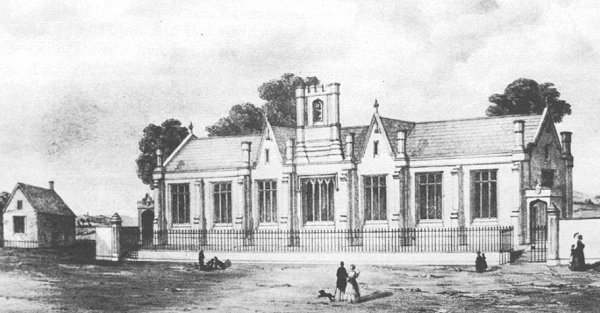
A drawing of the Huish National School.
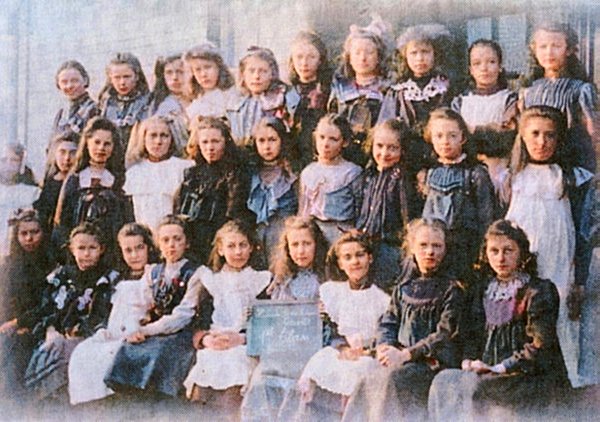
Huish Infants and Girls School, a colourised photograph of circa 1905.
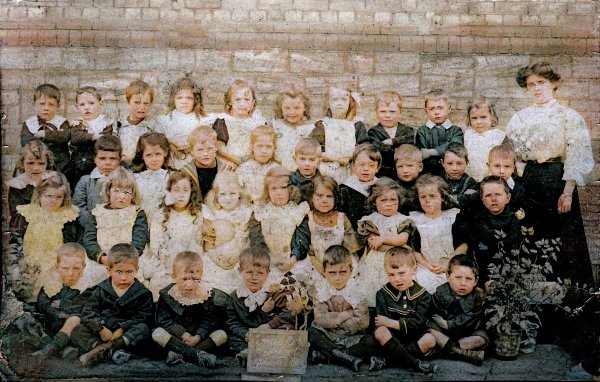
A mixed group in a colourised photograph of 1906.
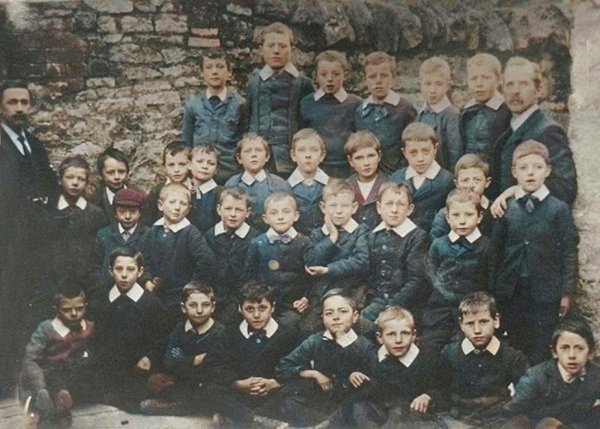
A colourised photograph of "Standard Six" class of 1907 with their teacher Mr Boalch.
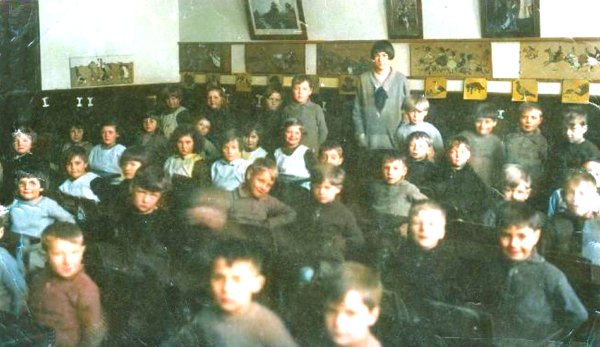
... and a colourised photograph of a class around 1925.
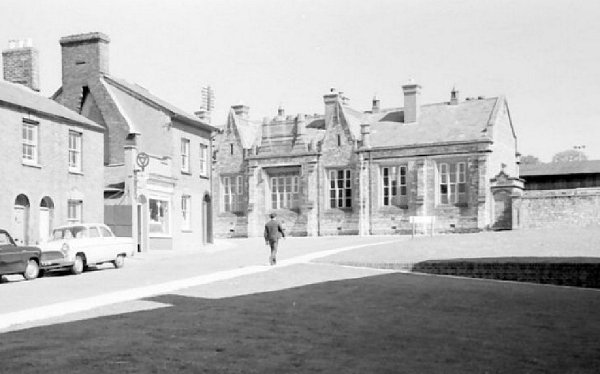
A view of the school buildings photographed around 1960 from the end of Wellington Street.
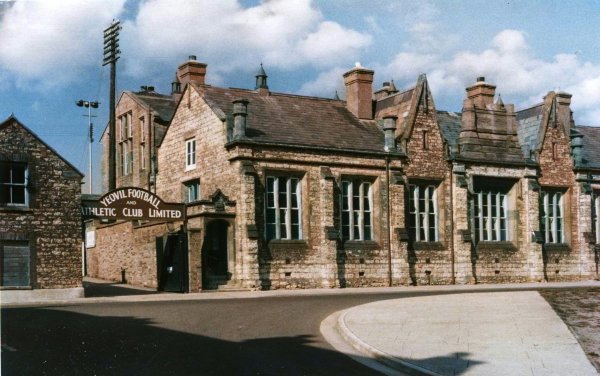
From the
Cave
Collection
(colourised).
Courtesy of South Somerset Heritage Collection
Huish Infants School photographed around 1965 from the Huish end of Salthouse Lane.
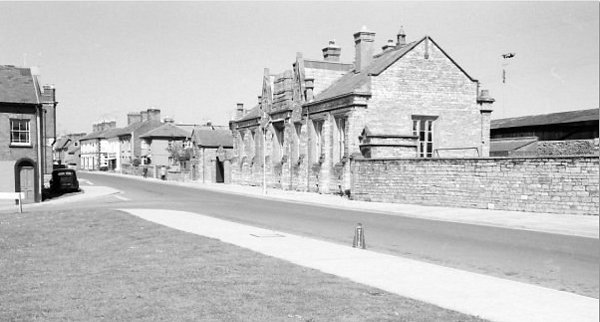
Again photographed around 1965, this view also takes in part of Huish.
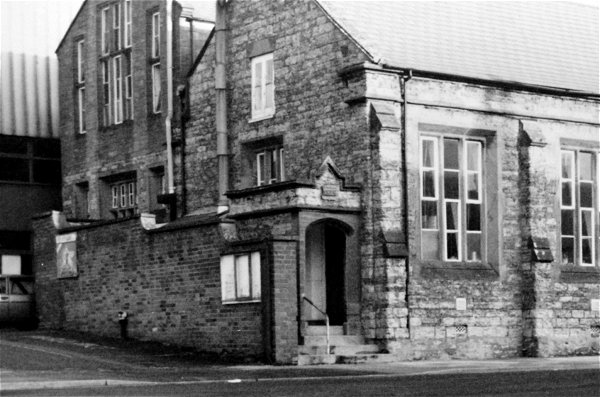
Courtesy of
Chris Rendell
The boys entrance, photographed in 1985. The stone plaque 'Boys' above the entrance is now affixed to the side wall and is seen in the photograph at the top of this page.
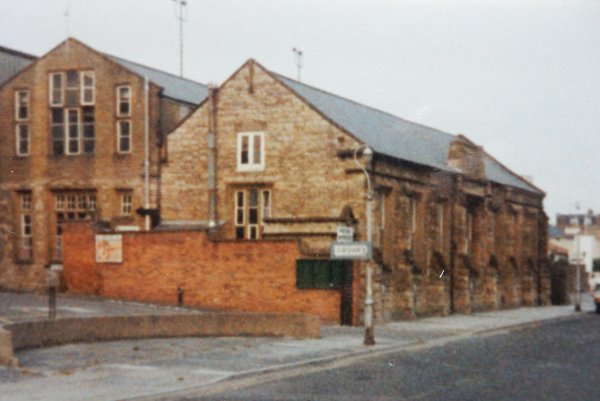
Courtesy of
Vivien and John
Cornelius
The school seen from Huish, circa 1991.
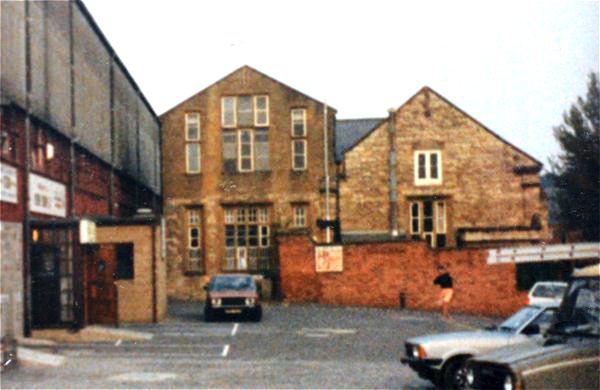
Courtesy of
Vivien and John
Cornelius
.... and seen from the side. At left is the entrance to Yeovil Town football club's pitch.

Courtesy of Alan
Jackson
The former school photographed in 1990 - boarded up and awaiting conversion to become part of Tesco's store.

Seen here in 1991, conversion of the old National School into part of Tesco's store begins.
It is very strange that what appears to be an original doorway has been exposed in the centre of the elevation - it doesn't appear as a doorway in any of the previous images.

The 'secret' door into Tesco. Above left is a detail from the previous photo and at right today's view - still with a secret door.
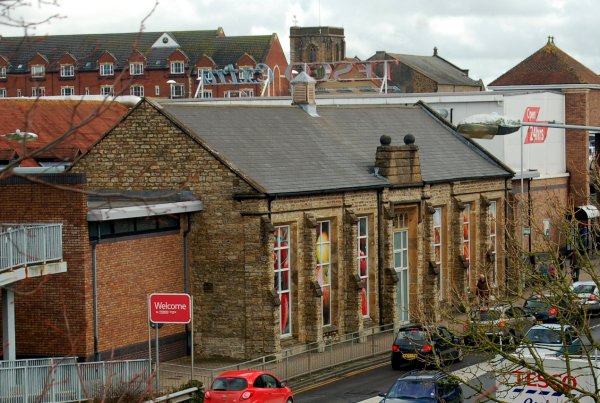
Photographed in 2013 from the infamous Queensway Bridge, notice that the front-facing twin gables and the numerous chimneys have been removed. Seen just above and right of the red 'Welcome' sign is the 'Boys' sign embedded in the wall and seen at the top of this page.